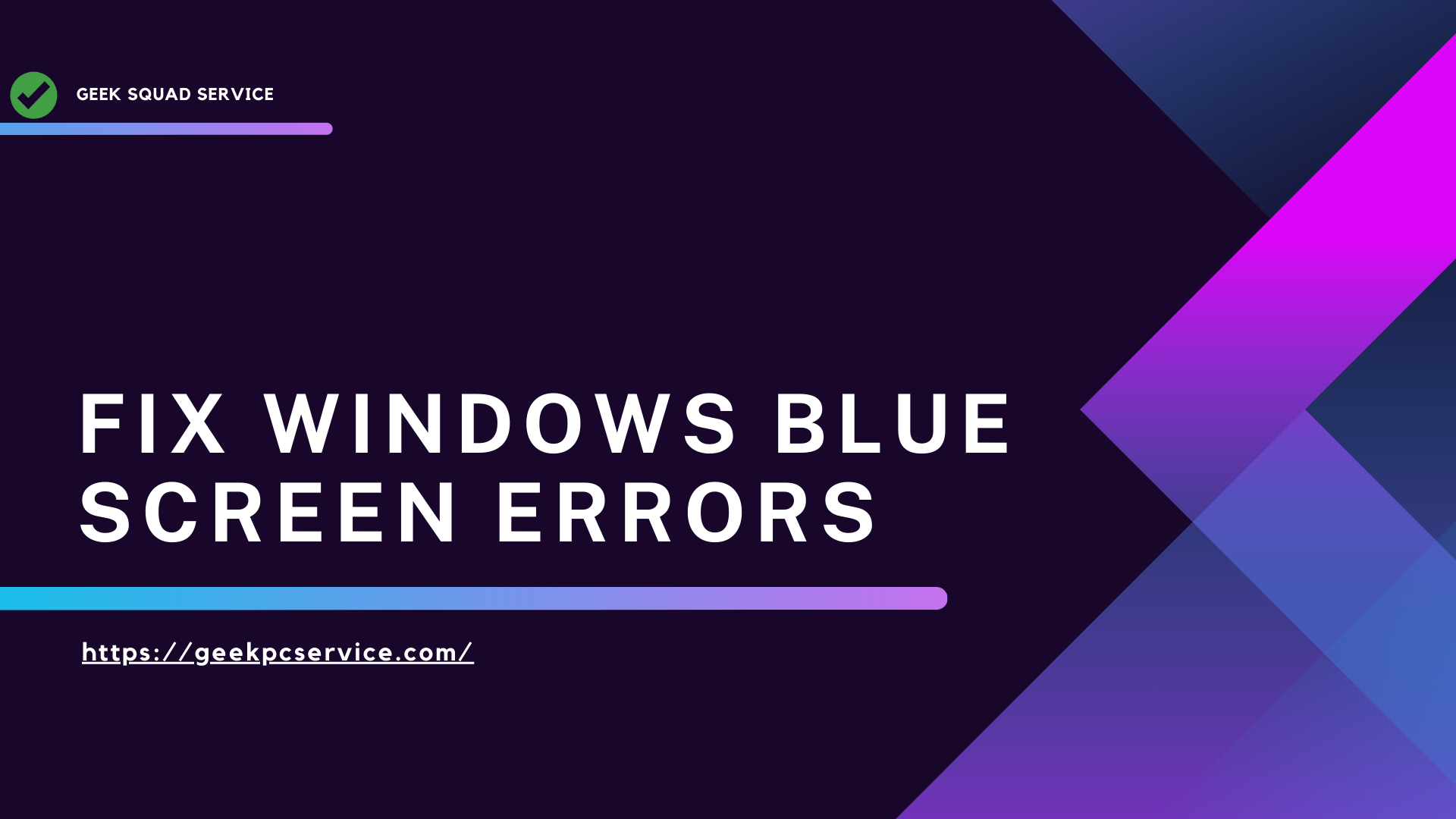Experiencing a blue screen error can be frustrating, however usually, it can be fixed with a systematic process. Our Geek Squad service guide shows you how to analyze and fix common blue screen errors in Windows. Follow our step-by-step article to fix the blue screen error.
Note Down the Stop Code
At the point when a blue screen shows up, it normally shows a mistake code or stop code (e.g., “CRITICAL_PROCESS_DIED” or “MEMORY_MANAGEMENT”). This code can assist you with distinguishing the particular issue.
Resolve This
- Record the stop code or mistake message shown on the blue screen.
- Utilize Microsoft’s BSOD Query Apparatus or search the blunder code online to get more insights concerning the issue.
Reboot in Protected Mode
Booting your PC into Protected Mode permits you to investigate without stacking superfluous drivers or projects that may be causing the issue.
The most effective method to Boot in Experimental Mode:
- Restart Your PC.
- Press F8 or Shift + F8 before Windows begins stacking (for Windows 7 or prior). For more current renditions, follow these means:
- Hold Shift and snap Restart from the power menu.
- Pick Investigate > High level Choices > Startup Settings.
- Click Restart, then, at that point, select Empower Experimental Mode (ordinarily choice 4).
Your PC will begin with just fundamental framework administrations.
Check for Ongoing Changes
Assuming that you’ve put in new programming, drivers, or updates before the blue screen showed up, these progressions could be the reason.
Resolve This
- Go to Control Board > Projects > Projects and Elements.
- Uninstall the product or update that was introduced not long before the mistake.
- Open Gadget Chief (right-click Start button > Gadget Director).
- Search for gadgets with a yellow interjection mark, demonstrating a driver issue.
- Right-click the risky driver, and select Uninstall or Update Driver.
Run Framework Record Checker (SFC)
Framework documents can become bad and trigger a blue screen. Running the Framework Record Checker instrument assists repair with any tainting framework documents.
Step-by-step instructions to Run SFC:
- Open Order Quick as Chairman:
- Look for cmd, right-click, and select Run as Manager.
- In the Order Brief, type:
- sfc/scannow
- Press Enter. The framework will output and fix degenerate records naturally.
- Restart your PC after the cycle is finished.
Check for Windows Updates
- Open Settings and explore Refresh and Security > Windows Update.
- Click Check for Updates.
- Introduce any suitable updates and restart your PC.
Run a Memory Test (Slam)
- Press Windows + R, type mdsched.exe, and press Enter.
- Select Restart now and check for issues.
- Your PC will restart, and the Windows Memory Indicative Device will test your Slam.
- After the test, Windows will report any issues found.
Take a look at the Hard Drive for Mistakes
- Open Order Speedy as Executive.
- Type:
chkdsk/f
- Press Enter.
- You will be incited to restart your PC to run the plate check.
- Permit the framework to check and fix any plate mistakes during boot.
Debilitate Overclocking
If you’ve overclocked your computer processor, GPU, or Smash, this could make precariousness and lead to a blue screen.
Instructions to Impair Overclocking:
- Restart your PC and enter the Profiles (for the most part by squeezing Del, Esc, or F2 during startup).
- Search for any overclock settings and reset them to Default.
- Save changes and restart your PC.
Output for Malware
Malware contaminations can ruin framework records, causing blue screens. Running a full framework output can help distinguish and eliminate malignant programming.
The most effective method to Sweep for Malware:
- Open Windows Security (or your antivirus programming).
- Explore Infection and Danger Security > Full Sweep.
- Let the antivirus filter your whole framework and eliminate any identified malware.
- Restart your PC after the sweep.
Play out a Framework to Reestablish
If the blue screen mistake began after a particular change (e.g., programming establishment), utilizing Framework Reestablish can return your framework to a past, stable state.
Resolve This
- Press Windows + R, type rstrui, and press Enter.
- Follow the prompts to choose a reestablishing point before the issue happens.
- Affirm and allow Windows to reestablish your framework to that point.
- Restart your PC once the interaction is finished.
Reinstall Windows
On the off chance that nothing from what was just mentioned advances settles the blue screen blunder, you might have to reinstall Windows. This is a final hotel choice that deletes all that and gives you a perfect framework.
Resolve This
- Go to Settings > Update and Security > Recuperation.
- Under Reset this PC, click Begin.
- Pick Keep my documents (to keep individual records) or Eliminate everything.
- Follow the prompts to reinstall Windows.




Pingback: Resetting Your PC: Fix There Was a Problem Resetting Your PC